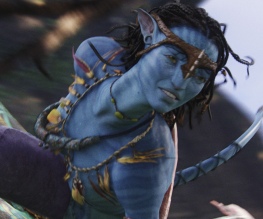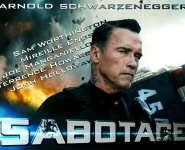Avatar

Set on the lush, deadly jungle moon of Pandora, Avatar is the story of Jake Sully (Sam Worthington), a paraplegic marine drafted to the planet in lieu of his late twin brother, a brilliant scientist who died while working on the Avatar program. Created by scientists researching the bizarre biology of Pandora, Avatars are a human-controlled mixture of our own DNA and that of the native populace, the Na’vi – ten foot tall half-cat, half-monkey jungle dwellers. Led by the morally resolute Grace Augustine (Sigourney Weaver), the scientists aren’t the only human presence on the moon. The main reason mankind has set its militaristic boot on Pandora is the presence of a rare mineral called – in all seriousness – unobtainium, which a profit-driven mining corporation (represented by a slimy and unethical Giovanni Ribisi) wants to strip mine.
[FLOWPLAYER=http://uk.clip-1.filmtrailer.com/2845_8488_a_3.flv,275,180]
Unfortunately for them, the Na’vi’s ancestral home – a whacking great big tree, no less – sits right on top of one of the richest seams of the mineral. Augustine, Sully and über-geek Norm Spellman (Joel David Moore) don their Avatars in an attempt to find a peaceful solution before trigger-happy nutjob Colonel Quaritch (Stephen Lang) shifts the Na’vi using shock-and-awe tactics. But as Sully learns more about the Navi and the bizarre world that surrounds them – as well as a burgeoning romance with Na’vi princess Neytiri (a sublime Zoë Saldaña) – he finds his loyalty to the human race tested.
Escape From Uncanny Valley
If anything, the plot is one of the weakest aspects of Avatar, with its down-the-line simplicity and black and white morality. But bizarrely, this simplicity complements and supports the film’s fairytale quality, and allows the narrative to progress at a measured, intelligent pace – despite other reviewers lambasting its length, Avatar doesn’t feel overlong or laboured. Slower, character-driven scenes mesh perfectly with adrenaline-fuelled and unobtrusive action set-pieces – there’s literally something there for everyone, and it all works.
And then, of course, there are the effects.
Or what should properly be referred to as the lack of effects. We’re happy to report thatAvatar really is the start of a new era in filmmaking – and that’s not idle hyperbole. The computer-generated characters are so real, so believable, that you quickly forget they’re computer generated at all. The giant blue Na’vi – lambasted in the popular press as “Thundersmurfs” – are easily the most intricately rendered alien species ever committed to the silver screen, miles away from the Uncanny Valley that has plagued previous GCI characters. They’re truly living beings – expressive, emotional and beautiful, moving through their jungle home with a grace and precision unseen outside – well, outside true animals living in their jungle homes. A massive amount of praise has to go to Zoë Saldaña here, whose performance is animalistic, heartbreaking and utterly spellbinding. Pandora itself is so exquisitely detailed and well-designed you become lost in an alien world so immersive it transcends sci-fi clichés and becomes something so much more – it’s like a David Attenborough documentary about a totally different planet.
Putting it simply, Avatar has everything – jaw-dropping effects, solid performances, slam-bang, eye-popping action and an entertaining, eco-aware story. Even the spiritualism latent in the plot feels refreshing in comparison to other guns-and-explosions blockbusters. It’s as simple as this: go and see it, in 3D if you can. Without question it’s the film of the decade.




And before “Avatar” and “Star Trek” there was Bill Shatner speaking Esperanto, in the horror film called “Incubus”.
See http://www.youtube.com/watch?v=F77k6SQX7iQ&feature=related
As an Esperanto speaker I found it terrifying! His Esperanto pronunciation that is, not the film.
Your readers may be interested in http://www.lernu.net 🙂